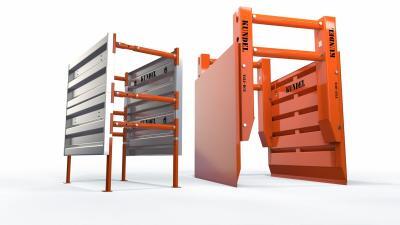What is a Bypass Valve?
A bypass valve is a type of valve designed to divert or bypass the flow of fluids in a pipeline, particularly during maintenance or emergency situations. It provides a means to redirect the fluid flow away from the main pipeline, allowing for necessary maintenance activities to be carried out without interrupting the overall process or causing damage to the system.
The primary purpose of a bypass valve is to ensure continuous operation of a pipeline system while performing tasks such as repair, inspection, or replacement of equipment. By diverting the flow through an alternative path, the main pipeline can be temporarily isolated without completely shutting down the system. This allows for maintenance or emergency repairs to be carried out efficiently, reducing downtime and minimizing disruptions to operations.
Bypass valves are commonly used in various industries, including oil and gas, petrochemical, water treatment, and power generation. They are typically installed in strategic locations along the pipeline, such as before and after critical equipment or sections that require maintenance. Depending on the specific application and system requirements, bypass valves can be manually operated or automated, providing flexibility and control over the diversion process.
In addition to maintenance purposes, bypass valves can also serve as a safety feature in emergency situations. For example, in the event of a pipeline rupture or other hazardous incidents, a bypass valve can be quickly activated to redirect the flow away from the affected area, preventing further damage or accidents.
Bypass valves come in various designs and configurations to suit different needs. Some common types include gate valves, ball valves, butterfly valves, and check valves. The selection of a bypass valve depends on factors such as the type of fluid, pressure, temperature, flow rate, and the specific requirements of the pipeline system.
Overall, bypass valves play a crucial role in maintaining the integrity and functionality of pipeline systems by allowing for efficient maintenance procedures and ensuring safety during emergencies. They provide a means to divert or bypass the flow of fluids, enabling necessary tasks to be performed without interrupting the overall process or compromising the system’s operation.

Trench Safety Equipment: Trench Boxes Manhole Boxes, Bedding Boxes, Road Plates
Some Additional Details About Bypass Valves:
- Types of Bypass Valves:
- Gate Valve: These valves use a gate or wedge-shaped disc to control the flow of fluids. They provide a tight seal when closed and are commonly used in large-diameter pipelines.
- Ball Valve: Ball valves have a spherical disc with a hole in the center that rotates to control the flow. They offer quick and easy operation and are suitable for high-pressure applications.
- Butterfly Valve: Butterfly valves consist of a rotating disc in the form of a disk or plate. When the disc is perpendicular to the flow, it blocks the fluid, and when parallel, it allows the fluid to pass through. They are lightweight and cost-effective.
- Check Valve: Check valves, also known as non-return valves, allow the flow of fluid in one direction while preventing backflow. They are commonly used in bypass lines to ensure one-way flow.
- Bypass Valve Activation:
- Manual Activation: Some bypass valves require manual operation, where an operator physically turns a handle, wheel, or lever to open or close the valve.
- Automated Activation: Many modern bypass valves are automated and can be controlled remotely. They can be operated through a control panel, programmable logic controller (PLC), or even integrated into a computerized system.
- Bypass Valve Sizing:
- Bypass valves need to be properly sized to accommodate the flow rate and pressure of the diverted fluid. Calculations take into account factors such as pipe diameter, fluid properties, desired flow rate, and the pressure drop across the valve.
- Bypass Valve Maintenance:
- Regular maintenance and inspection of bypass valves are essential to ensure their proper functioning. This includes checking for leaks, monitoring valve positions, and verifying that the valve is operable in case of emergencies.
- Valve maintenance may involve cleaning, lubrication, and replacement of worn-out parts to maintain optimal performance and extend the valve’s lifespan.
- Bypass Valve Safety:
- Bypass valves are critical components for ensuring the safety of pipelines and preventing accidents. They allow for the isolation of damaged sections during emergencies, mitigating the risk of spills, leaks, or explosions.
- Proper safety procedures should be followed when operating bypass valves to ensure the safety of personnel and the integrity of the system.
It’s important to note that specific details about bypass valves, such as design, installation, and operation, may vary depending on the industry, application, and regulatory requirements. Consulting industry standards and working with qualified professionals is crucial for the proper selection, installation, and maintenance of bypass valves in a specific pipeline system.

